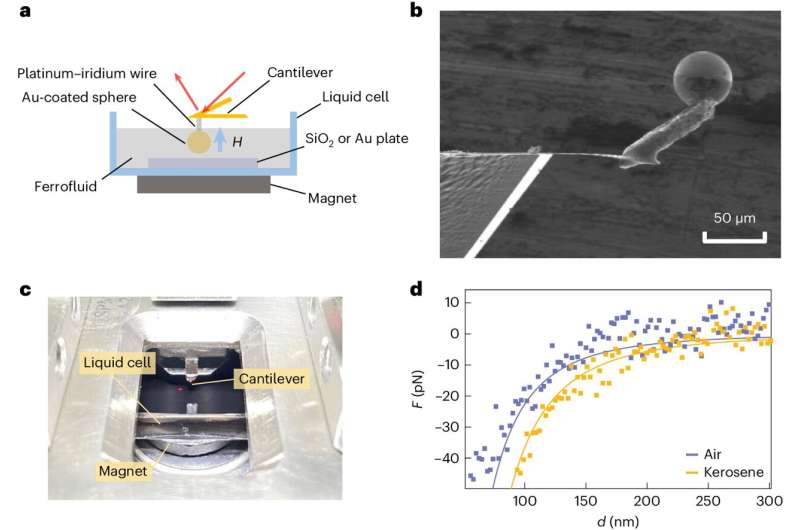This article has been reviewed according to Science X's editorial process and policies. Editors have highlighted the following attributes while ensuring the content's credibility:
fact-checked
peer-reviewed publication
trusted source
proofread
Researchers tune Casimir force using magnetic fields

Research teams led by Prof. Zeng Changgan and Zhang Hui from the Hefei National Laboratory for Physical Sciences at the Microscale, the University of Science and Technology of China (USTC) of the Chinese Academy of Sciences have achieved a reversible transition from the Casimir attraction to repulsion under magnetic field control by using a magnetic fluid as an intermediate medium. Their study is published in Nature Physics.
The Casimir effect is a phenomenon predicted in 1948 by Dutch physicist Hendrik Casimir. According to this theory, two electrically neutral metal plates in a vacuum experience an attraction at submicron scales due to quantum fluctuations. The Casimir force is, in accordance with the Lifshitz theory, influenced by the dielectric function and magnetic conductivity of materials.
Previous research primarily focused on the design of the material's dielectric function. However, most materials have a dielectric function that is insensitive to external fields, making it challenging to regulate the Casimir force using external fields.
In this study, researchers found that the magnetic conductivity of magnetofluid can be significantly regulated by a magnetic field. Through the ingenious design, they chose to use magnetofluid as an intermediate medium to study the Casimir effect between a gold sphere and a silicon dioxide substrate.
Combining calculations with experiments, researchers found that the Casimir force can be tuned over a large parameter space (magnetic field magnitude, distance between gold spheres and substrate, volume fraction of magnetic fluid). In particular, they realized a reversible transition from the magnetic-field-tunable Casimir attraction to repulsion.
Additionally, researchers developed a special cantilever beam device for Casimir force measurement in non-transparent liquids.
This study provides new ideas for the future development of microelectromechanical system devices based on tunable Casimir effect.
More information: Yichi Zhang et al, Magnetic-field tuning of the Casimir force, Nature Physics (2024). DOI: 10.1038/s41567-024-02521-0
Journal information: Nature Physics
Provided by Chinese Academy of Sciences





















